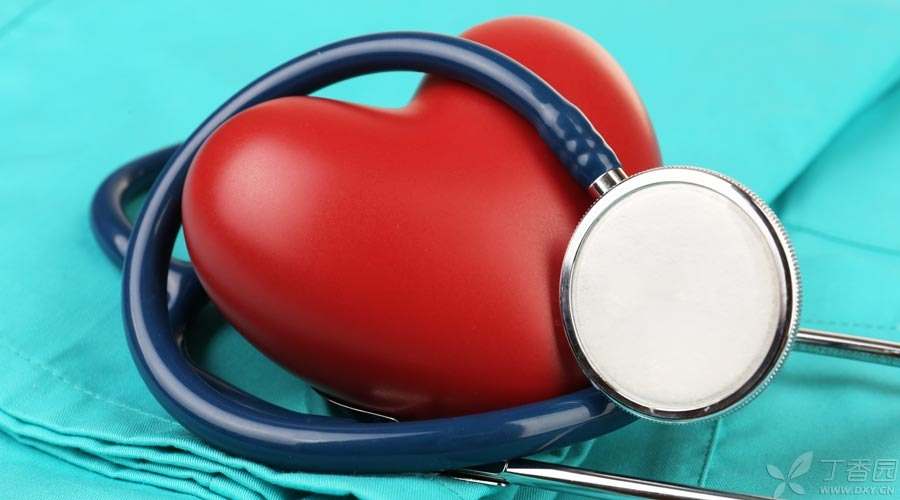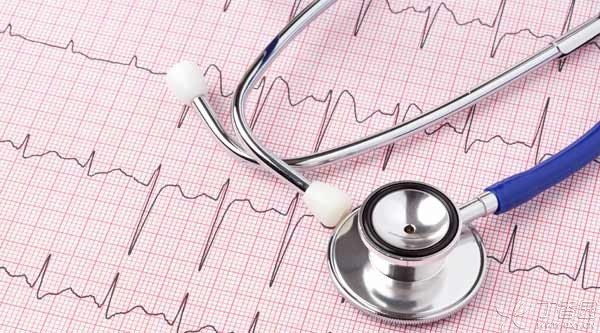
When it comes to heart disease, many people will come to mind with pictures of heart attack [tightly covering your chest and expressing pain].
In fact, the concept of [heart disease] includes all kinds of heart damage and inability to work properly. Coronary heart disease, arrhythmia, cardiomyopathy, heart failure, myocardial infarction, etc. all belong to the category of heart disease.
We have sorted out some common sense problems and hope you can have an accurate and brief understanding of heart diseases after reading them.
Arterial blockage
Excessive fat and cholesterol in blood are deposited in coronary arteries and their branches, resulting in the formation of atherosclerotic plaques, which will narrow the vascular lumen and reduce the blood supply of the heart itself.
In general, the symptoms of coronary artery stenosis are not obvious, and it may not be until a heart attack that the patient discovers that the coronary artery has been blocked so seriously.
If there is frequent chest pain (angina pectoris), then we need to be more vigilant, which may be a sign of coronary heart disease.
A heart attack
Inside the atherosclerotic plaque is a sticky atherosclerotic content with a layer of fiber cap on the surface and a slightly hard texture. If the plaque surface is damaged, the contents will flow out and may form thrombus.
Different branches of the coronary artery support different regions of the myocardium. When a thrombus completely blocks a branch of the coronary artery, It will immediately block the blood flow to this part of the myocardium. This means that the oxygen source of myocardial cells is cut off. Hypoxia will cause irreversible damage to myocardial cells, which may be fatal. Therefore, if there is a heart attack, timely treatment is crucial.
The feeling of heart attack is how’s?
You may feel the following:
- Chest pain, or chest squeezing; Discomfort radiates to the back, lower jaw, neck or arm; Symptoms of nausea, heartburn or indigestion; Weakness, dyspnea and anxiety; The heart beats faster or irregularly.
Even if the above symptoms are mild, they should not be ignored. Please go to the hospital in time. This is also a very urgent situation.

Sex Differences in Symptoms
Compared with women, men have a higher risk of heart attack, the age of attack will be younger, and the risk of heart attack among relatives is higher.
However, female patients generally feel less chest pain than men when they have a heart attack. Their more symptoms are heartburn, palpitation, anorexia, cough or fatigue.
However, heart disease is a dangerous killer for both men and women. Don’t ignore the above symptoms and check them in time. If it is a heart disease, the longer it lasts, the greater the damage.
Rapid reaction
Timely help can save lives.
Even if you are not sure whether it is a heart attack or not, if the above discomfort occurs, please immediately call 120 and explain your location and describe your discomfort.
Don’t wait, hold the lucky mentality and think that the symptoms will improve on their own for a while.
Don’t drive to the hospital by yourself, it is very dangerous. The ambulance will arrive in time and start the first aid work immediately.
Arrhythmia
Usually, the heart beats regularly to deliver blood to the body smoothly, but sometimes the heart loses this rhythm.
Arrhythmia occurs when the heart beats faster, slower, or faster and slower. Some transient arrhythmia is harmless. However, some types of arrhythmia can affect blood flow and cause physical damage. If you find that the rhythm of the heart beats abnormally, you are advised to consult a specialist.
Cardiomyopathy
Cardiomyopathy, as its name implies, has problems with the muscles of the heart. This makes it difficult for the heart to pump enough blood effectively to other parts of the body.
With the extension of the course of the disease, hypertension, obesity, diabetes, etc. may lead to myocardial problems. If not controlled, heart failure may eventually develop.
Heart failure
The heart does not have enough strength to pump blood to meet the needs of the human body.
Heart failure does not mean that the heart stops working. Cardiomyocytes will gradually become bulky and try to maintain an adequate blood supply. As time goes by, the heart will become larger and the cardiomyocytes will become very tired, weakening blood flow and causing a vicious circle.
Congenital heart disease
Heart diseases at birth generally include pulmonary artery stenosis, aortic coarctation, atrial septal defect, ventricular septal defect, patent ductus arteriosus, tetralogy of Fallot and macrovascular dislocation.
Not all congenital heart diseases require treatment. In fact, some congenital heart diseases do not show clinically visible symptoms. However, patients with congenital heart diseases are usually more likely to suffer from diseases such as arrhythmia, heart failure and infective endocarditis.
When finding congenital heart disease, follow the doctor’s advice to see if drugs or surgery are needed, and ask what problems need to be paid attention to in daily life.
Sudden cardiac death
This is different from a heart attack.
Sudden cardiac death is usually caused by the failure of the electrical conduction system of the heart. The heart beats irregularly or even vibrates. When ventricular fibrillation occurs, the heart cannot pump blood out and transport it to other parts of the body.
At this time, if CPR (cardiopulmonary resuscitation) is not performed, the patient will die within a few minutes. Therefore, once sudden cardiac death occurs in the surrounding area, while cardiopulmonary resuscitation is performed immediately, the patient should also ask the surrounding area for help as soon as possible, dial the emergency phone, and do not panic and wait.

Electrocardiogram
Apply the electrode sheet to the skin for a few minutes, and the instrument will use a curve to depict the cardiac electrical activity of the examinee.
Electrocardiogram can help diagnose arrhythmia, myocardial ischemia and myocardial infarction, and judge the location of myocardial infarction. To help judge the effects of drugs on the heart and monitor the pacing status of artificial heart.
Doctors can also compare these records later to track changes in the heart.
Load Test
Stress test refers to observing the work of the heart when it is doing its best by increasing myocardial oxygen consumption through exercise. Doctors will ask you to ride a bicycle, walk on a treadmill or do some other exercise, and record electrocardiogram, heart rate and blood pressure at the same time to observe changes in myocardial blood perfusion or changes in cardiac function before and after exercise.
Stress test can be used to diagnose myocardial ischemia of coronary heart disease, evaluate the reserve function of coronary artery, judge whether angina pectoris is accompanied by myocardial ischemia after myocardial infarction, and evaluate the prognosis and therapeutic effect of coronary heart disease.
Ambulatory electrocardiogram
This portable device can be used to record the rhythm of the heart.
If the doctor thinks you need it, he may ask you to wear this instrument for 1-2 days. Unlike electrocardiogram, which only records immediate ECG activity, ambulatory electrocardiogram continuously records heart activity for 24 hours.
Holter electrocardiogram can detect hidden arrhythmia, observe bradycardia, or capture occasional abnormal cardiac activity.
Echocardiography
This examination uses ultrasound to dynamically display the blood flow of the heart in real time. From echocardiography, doctors will find problems in various chambers, valves or blood flow to help diagnose diseases and evaluate therapeutic effects.
Cardiac CT
Cardiac CT uses radiation to examine the heart and blood vessels. It can also use computers to reconstruct three-dimensional images. Doctors can find plaques or calcifications in coronary arteries, as well as valve diseases and other types of heart diseases.
Cardiac catheterization
The doctor sends a catheter along the blood vessel in the arm or thigh to the heart. Then, the developer is injected into the coronary artery to show the blockage condition and severity of the blockage more clearly in the X-ray. The stent can also be directly placed in the blood vessel through the catheter to solve the problem of blood vessel stenosis.
This is a therapeutic examination method.
Cardiac medicine
A lot of prescription drugs can be used to treat heart disease.
Lower blood pressure, adjust heart rate, reduce cholesterol, control arrhythmia, prevent thrombosis, help the heart pump blood…
We must clearly distinguish the functions and administration methods of various drugs, and remember to follow the doctor’s advice and take drugs correctly.
Angioplasty
Angioplasty refers to reopening a blocked blood vessel. Promote blood flow. Doctors insert a thin catheter with a balloon at the tail into the artery. When the balloon reaches the blocked area and inflates, the balloon can expand the coronary artery and allow blood to pass freely. Doctors may place a stent, a small reticular tube, that can support the blood vessel all the time and keep the blood vessel unobstructed.
Cardiac bypass
If one or more coronary arteries are extremely narrow or blocked, doctors may recommend bypass surgery.
Doctors will take out a blood vessel from other parts of the body, such as chest, abdomen, limbs, etc., and then connect it to the healthy artery of the heart. This healthy blood vessel can replace the problematic blood vessel, provide sufficient blood to the myocardium, and solve the problem of coronary stenosis.
If you have a heart disease, you should pay attention to your life.
Most types of heart disease have a long course. At the beginning of the disease, it can show no symptoms and do not affect daily life. However, if it is ignored, the heart disease will gradually worsen until it seriously affects all aspects of life. Therefore, the earlier you receive regular treatment, the better the effect will be.
When you feel dyspnea or fatigue easily, your heart may already begin to fail. Pay attention to whether there is edema in your lower legs, ankles and instep, which is one of the typical manifestations of heart failure.
In most cases, early and timely treatment through drugs, lifestyle improvement, surgery and other methods can control heart failure so that it will not continue to deteriorate, thus improving the quality of life.
Daily prevention is always the most important. The following daily habits can reduce the risk of heart disease to some extent:
- Moderate exercise to maintain a healthy weight; A balanced diet; Control drinking and prohibit smoking; If there are diabetes, hypertension, hyperlipidemia and other diseases, it is very important to control blood sugar, blood pressure and blood lipid within a reasonable range.
Clove Garden is exclusively authorized and cannot be reproduced without permission.
